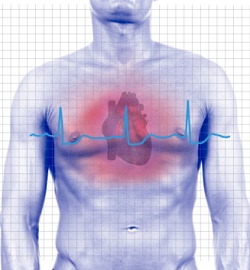Pavilion Publishing and Media Ltd
Blue Sky Offices Shoreham, 25 Cecil Pashley Way, Shoreham-by-Sea, West Sussex, BN43 5FF, UNITED KINGDOM
 Patients who look at images of their own calcified coronary arteries are more likely to make positive lifestyle changes as a result, new research has revealed.
Patients who look at images of their own calcified coronary arteries are more likely to make positive lifestyle changes as a result, new research has revealed.
The study, presented at the EuroHeartCare 2015 conference, found that patients were more likely to stop smoking, lose weight and take statins if they viewed pictures of their own arteries.
The study included 189 patients with hyperlipidaemia who had undergone a CTA of their coronary arteries and been diagnosed with non-obstructive coronary artery disease. Patients were randomised in a 1:1 fashion to either the intervention or to the standard follow-up in general practice that consisted of information about risk and lifestyle modification. Risk factors were measured at baseline and 6 months.
The intervention was a 25-minute consultation with a nurse. The first 15 minutes focused on talking about risk and patients were shown a CT image of their calcified coronary arteries. Ten minutes were then devoted to giving advice about statins, aspirin, blood pressure, healthy diet, physical activity and smoking cessation based on ESC prevention guidelines.
After excluding patients who discontinued statin therapy due to side effects (20 in the control group, 22 in the intervention group) the researchers found a significantly greater reduction in plasma total cholesterol concentrations in the intervention group compared to controls (1.71 mmol/L vs. 1.44 mmol/L, p = 0.027).
More patients in the control group continued smoking (22% compared to 9%) and eating an unhealthy diet (64% compared to 44%). The intervention group lost an average of 1.5 kg in weight, compared to an average of 0.5 kg in the control group. There was also a tendency towards a higher degree of adherence to statin therapy in the intervention group.
The study was presented by Rikke Elmose Mols, a nurse and PhD student in the Department of Cardiology at Aarhus University Hospital-Skejby, Denmark. “Patients with non-obstructive coronary artery disease and hyperlipidaemia (high blood lipids) urgently need to improve their lifestyles and take lipid-lowering therapy to reduce their risk of future cardiovascular adverse events,” she said. “Some patients call us after coronary computed tomography angiography if the result is non-obstructive coronary artery disease. They are afraid of a heart attack and have questions about the prescribed lipid-lowering drugs and how to manage their increased risk.
“When patients receive a new diagnosis of non-obstructive coronary artery disease it might be a good time to motivate them to take their lipid-lowering therapy and adopt a healthy lifestyle. But until now there has not been a study on the impact of showing consecutive patients with atypical angina images of their calcified coronary arteries as a way to stimulate change.”


